24 mar 2019
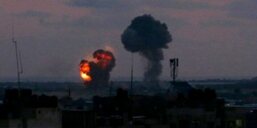
Israeli warplanes have launched attacks against the positions of the Hamas resistance movement, in the Gaza Strip, amid weekly protests at the edge of the enclave, to assert the right of displaced Palestinians to return to their homeland.
The Israeli fighter jets targeted the positions of Hamas in the south of the Gaza Strip, early on Sunday, PNN reports.
Tel Aviv claimed that Palestinians had thrown “explosive devices” over the fence that separates Gaza from Israeli-occupied territory, late on Saturday, and that the airstrikes were in response to that alleged action.
It was not clear whether the strikes caused any damage or casualties.
Meanwhile, Gaza’s Health Ministry announced the death of a 24-year-old Palestinian man, Habeeb al-Masri, who had earlier sustained wounds in clashes with Israeli forces.
Two other Palestinians were killed by Israeli fire, in separate clashes, on Friday.
Gazans started protesting along the fence on March 30, 2018, demanding the right to return for those Palestinians driven out of their homeland by Israeli aggression and calling for a halt to Israel’s blockade of the enclave.
At least 258 Palestinians have been killed by Israeli fire, in Gaza, since the weekly protests began.
Earlier on Friday, the United Nations Human Rights Council denounced Israel’s use of “unlawful lethal and other excessive force” against unarmed Gaza protesters.
Following the UN condemnation of Israel, Hamas called on the international community to take practical measures to stop the Israeli aggression.
The Israeli fighter jets targeted the positions of Hamas in the south of the Gaza Strip, early on Sunday, PNN reports.
Tel Aviv claimed that Palestinians had thrown “explosive devices” over the fence that separates Gaza from Israeli-occupied territory, late on Saturday, and that the airstrikes were in response to that alleged action.
It was not clear whether the strikes caused any damage or casualties.
Meanwhile, Gaza’s Health Ministry announced the death of a 24-year-old Palestinian man, Habeeb al-Masri, who had earlier sustained wounds in clashes with Israeli forces.
Two other Palestinians were killed by Israeli fire, in separate clashes, on Friday.
Gazans started protesting along the fence on March 30, 2018, demanding the right to return for those Palestinians driven out of their homeland by Israeli aggression and calling for a halt to Israel’s blockade of the enclave.
At least 258 Palestinians have been killed by Israeli fire, in Gaza, since the weekly protests began.
Earlier on Friday, the United Nations Human Rights Council denounced Israel’s use of “unlawful lethal and other excessive force” against unarmed Gaza protesters.
Following the UN condemnation of Israel, Hamas called on the international community to take practical measures to stop the Israeli aggression.
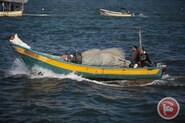
Israeli naval forces opened heavy fire, on Sunday, towards Palestinian fishing boats off the coast of Khan Younis and Rafah, in the southern besieged Gaza Strip.
Eyewitnesses said that the Israeli navy repeatedly opened fire towards a number of Palestinian fishing boats, which were working within the permitted fishing zone, forcing the fishermen to head back to shore in fear for their lives.
No injuries were reported.
According to the United Nations Office for Humanitarian Affairs (OCHA), Israel’s blockade of the coastal enclave has seriously undermined the ability for Gazan fishermen to make a living at sea.
The Israeli army regularly detains and opens fire on unarmed Palestinian fishermen, shepherds, and farmers along the border areas if they approach the unilaterally declared buffer zone.
Israeli human rights group B'Tselem recently concluded that Israel's Gaza closure and "harassment of fishermen" have been "destroying Gaza's fishing sector," with 95% of fishermen living below the poverty line.
Local rights organization, Al-Haq, has documented many cases of Israeli aggression toward Palestinian fishermen off the Gazan coast, calling the Israel's action against the fishermen "collective punishment" that imposes "difficult economic and social conditions."
Eyewitnesses said that the Israeli navy repeatedly opened fire towards a number of Palestinian fishing boats, which were working within the permitted fishing zone, forcing the fishermen to head back to shore in fear for their lives.
No injuries were reported.
According to the United Nations Office for Humanitarian Affairs (OCHA), Israel’s blockade of the coastal enclave has seriously undermined the ability for Gazan fishermen to make a living at sea.
The Israeli army regularly detains and opens fire on unarmed Palestinian fishermen, shepherds, and farmers along the border areas if they approach the unilaterally declared buffer zone.
Israeli human rights group B'Tselem recently concluded that Israel's Gaza closure and "harassment of fishermen" have been "destroying Gaza's fishing sector," with 95% of fishermen living below the poverty line.
Local rights organization, Al-Haq, has documented many cases of Israeli aggression toward Palestinian fishermen off the Gazan coast, calling the Israel's action against the fishermen "collective punishment" that imposes "difficult economic and social conditions."
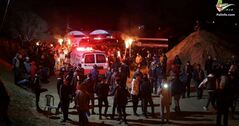
At least three Palestinian protesters were injured and dozens suffered from their exposure to tear gas fumes during renewed nighttime rallies on Saturday in border areas east of the besieged Gaza Strip.
Local sources told the Palestinian Information Center (PIC) that dozens of young men flocked in the evening to the March of Return camps in the east of Gaza and participated in the night protests.
They added that Israeli soldiers intensively fired live ammunition and tear gas grenades at the protesters, injuring three of them in the east of Jabalia, Rafah and Khan Younis.
The protesters torched tires, used loudspeakers to play national songs and sirens, and flashed laser beams at soldiers behind the border fences.
Organizers say such night rallies are aimed at creating confusion among Israeli forces on the border and pressuring Israel to lift its blockade on Gaza.
Local sources told the Palestinian Information Center (PIC) that dozens of young men flocked in the evening to the March of Return camps in the east of Gaza and participated in the night protests.
They added that Israeli soldiers intensively fired live ammunition and tear gas grenades at the protesters, injuring three of them in the east of Jabalia, Rafah and Khan Younis.
The protesters torched tires, used loudspeakers to play national songs and sirens, and flashed laser beams at soldiers behind the border fences.
Organizers say such night rallies are aimed at creating confusion among Israeli forces on the border and pressuring Israel to lift its blockade on Gaza.
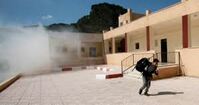
Dozens of Palestinian students and teachers on Sunday suffered from their exposure to tear gas fumes after Israeli soldiers attacked them and their school in al-Khalil city.
According to local sources, Israeli soldiers intensively fired tear gas grenades at Palestinian students as they were entering al-Nahda School in the morning.
Several students and teachers received on-site medical assistance.
Meanwhile, the Israeli occupation forces (IOF) stormed and ransacked a Palestinian house in Jabel Johar neighborhood of al-Khalil city and stole a sum of money belonging to the homeowner, Hani al-Rajbi.
The IOF also raided two homes belonging to brothers from the family of al-Rajoub in Dura town, south of al-Khalil.
According to local sources, Israeli soldiers intensively fired tear gas grenades at Palestinian students as they were entering al-Nahda School in the morning.
Several students and teachers received on-site medical assistance.
Meanwhile, the Israeli occupation forces (IOF) stormed and ransacked a Palestinian house in Jabel Johar neighborhood of al-Khalil city and stole a sum of money belonging to the homeowner, Hani al-Rajbi.
The IOF also raided two homes belonging to brothers from the family of al-Rajoub in Dura town, south of al-Khalil.
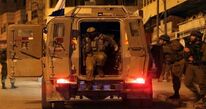
The Israeli occupation forces (IOF) on Saturday evening launched violent raids on Palestinian homes and stores in al-Khalil, south of the West Bank.
Acceding to local sources, Israeli soldiers broke into and ransacked the house of Nidal an-Natsha in al-Sheikh neighborhood in al-Khalil city.
The IOF also searched a Palestinian cattle farm and one commercial store in Yatta city, south of al-Khalil.
Earlier, the IOF set up a makeshift checkpoint at the Yatta-Zeif junction in the south of al-Khalil and intercepted Palestinian cars and passengers for security check.
Acceding to local sources, Israeli soldiers broke into and ransacked the house of Nidal an-Natsha in al-Sheikh neighborhood in al-Khalil city.
The IOF also searched a Palestinian cattle farm and one commercial store in Yatta city, south of al-Khalil.
Earlier, the IOF set up a makeshift checkpoint at the Yatta-Zeif junction in the south of al-Khalil and intercepted Palestinian cars and passengers for security check.

Israeli soldiers injured, on Saturday evening, several Palestinians, including one who suffered life-threatening wounds, during protests across the eastern parts of the besieged and improvised Gaza Strip.
Medical sources said the soldiers shot four Palestinians with live fire, east of Jabalia in northern Gaza Strip, and east of al-Boreij, in central Gaza, and added that one of the wounded Palestinians suffered life-threatening wounds.
They also said that several Palestinians suffered the severe effects of teargas inhalation, east of Rafah, in southern Gaza strip, and received the needed medical attention.
Also Saturday, The Israeli Airforce fired a missile at a motorcycle carrying three Palestinians, injuring all three.
On Friday, Israeli forces killed two Palestinian civilians, identified as Nidal ‘Abdel Karim Ahmed Shatat, 29, and Jihad Munir Khaled Hararah, 24, and wounded more than 180 during protests at the Gaza-Israel border.
Also on Friday, Israeli navy ships fired live rounds at Palestinian fishing boats off the Gaza Coast, wounding three fishermen.
Medical sources said the soldiers shot four Palestinians with live fire, east of Jabalia in northern Gaza Strip, and east of al-Boreij, in central Gaza, and added that one of the wounded Palestinians suffered life-threatening wounds.
They also said that several Palestinians suffered the severe effects of teargas inhalation, east of Rafah, in southern Gaza strip, and received the needed medical attention.
Also Saturday, The Israeli Airforce fired a missile at a motorcycle carrying three Palestinians, injuring all three.
On Friday, Israeli forces killed two Palestinian civilians, identified as Nidal ‘Abdel Karim Ahmed Shatat, 29, and Jihad Munir Khaled Hararah, 24, and wounded more than 180 during protests at the Gaza-Israel border.
Also on Friday, Israeli navy ships fired live rounds at Palestinian fishing boats off the Gaza Coast, wounding three fishermen.

A group of illegal Israeli colonialist settlers attacked, on Saturday evening, a Palestinian woman and her son near their home in Tal Romedia neighborhood in Hebron city, in the southern part of the occupied West Bank, the Palestinian News &Info Agency (WAFA) has reported.
WAFA stated that the Israeli assailants, who live in an illegal outpost in the neighborhood, attacked the woman and her son, from Qa’war family, near their own home, and shouted insults at them. video
Tal Romeida is located west of the Ibrahimi Mosque and overlooks Hebron city center; it is subject to constant assaults and violations by the illegal colonists and the soldiers.
In related news, the soldiers abducted Ahmad Qassam Khatib, from Abu Shkheidim village, while crossing ‘Atara military roadblock, north of Ramallah, in central West Bank.
The soldiers also invaded the al-‘Ezariyya town, east of occupied Jerusalem, searched homes and abducted a young man, identified as Amir Nasser al-Asmar.
Also in Jerusalem, the soldiers invaded Abu Dis town, east of the city, and fired live rounds, gas bombs and concussion grenades at Palestinians protesting the invasion.
WAFA stated that the Israeli assailants, who live in an illegal outpost in the neighborhood, attacked the woman and her son, from Qa’war family, near their own home, and shouted insults at them. video
Tal Romeida is located west of the Ibrahimi Mosque and overlooks Hebron city center; it is subject to constant assaults and violations by the illegal colonists and the soldiers.
In related news, the soldiers abducted Ahmad Qassam Khatib, from Abu Shkheidim village, while crossing ‘Atara military roadblock, north of Ramallah, in central West Bank.
The soldiers also invaded the al-‘Ezariyya town, east of occupied Jerusalem, searched homes and abducted a young man, identified as Amir Nasser al-Asmar.
Also in Jerusalem, the soldiers invaded Abu Dis town, east of the city, and fired live rounds, gas bombs and concussion grenades at Palestinians protesting the invasion.
23 mar 2019
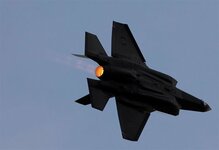
The Israeli airforce targeted a motorcycle carrying three Palestinians on Saturday, injuring all three.
According to the Palestinian news agency Al Ray, a military aircraft targeted a motorcycle belonging to a citizen near Jaker Street, east of al- Boreij refugee camp in the central Gaza Strip .
The Palestinian Health Ministry confirmed that three wounded Palestinians were transported to the Al-Aqsa Martyrs Hospital in the central part of the Gaza Strip for treatment.
The al-Boreij camp is located in the central eastern part of the Gaza Strip, and is a frequent target of Israeli military attacks.
The targeting of the motorcycle comes one day after Israeli forces killed two Palestinian civilians and wounded more than 180 during protests at the Gaza-Israel border.
It is worth noting that the Israeli occupation forces systematically target communities near the border of the Gaza Strip, often under the pretext that Palestinian youth have been releasing balloons that cross the border with Israel.
According to the Palestinian news agency Al Ray, a military aircraft targeted a motorcycle belonging to a citizen near Jaker Street, east of al- Boreij refugee camp in the central Gaza Strip .
The Palestinian Health Ministry confirmed that three wounded Palestinians were transported to the Al-Aqsa Martyrs Hospital in the central part of the Gaza Strip for treatment.
The al-Boreij camp is located in the central eastern part of the Gaza Strip, and is a frequent target of Israeli military attacks.
The targeting of the motorcycle comes one day after Israeli forces killed two Palestinian civilians and wounded more than 180 during protests at the Gaza-Israel border.
It is worth noting that the Israeli occupation forces systematically target communities near the border of the Gaza Strip, often under the pretext that Palestinian youth have been releasing balloons that cross the border with Israel.

Israeli forces detained a Palestinian youth while at the Qalandiya checkpoint between Jerusalem and Ramallah in the central occupied West Bank, overnight.
Locals reported that Israeli forces detained Wajdi Thaer Awwad from the al-Mughayyir village while passing the Qalandiya checkpoint.
Meanwhile, clashes erupted after Israeli forces raided the Azzun town in eastern Qalqiliya in the northern West Bank.
Several locals suffered tear-gas inhalation.
Israeli soldiers also raided the Muthalath al-Shuhada village in the northern West Bank city of Jenin; clashes erupted in the village between locals and Israeli forces.
Israeli forces fired tear-gas bombs during clashes; no injuries were reported.
Locals reported that Israeli forces detained Wajdi Thaer Awwad from the al-Mughayyir village while passing the Qalandiya checkpoint.
Meanwhile, clashes erupted after Israeli forces raided the Azzun town in eastern Qalqiliya in the northern West Bank.
Several locals suffered tear-gas inhalation.
Israeli soldiers also raided the Muthalath al-Shuhada village in the northern West Bank city of Jenin; clashes erupted in the village between locals and Israeli forces.
Israeli forces fired tear-gas bombs during clashes; no injuries were reported.
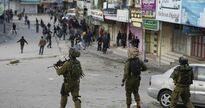
Violent clashes broke out at dawn Saturday between Palestinian young men and Israeli soldiers near the southern entrance to Jenin city in the occupied West Bank.
Local sources told a reporter for the Palestinian Information Center (PIC) that the clashes started after Israeli soldiers aboard several military vehicles stopped at the junction of ash-Shuhada near the southern entrance of Jenin city.
They added that the skirmishes raged up to the main entrance of Qabatiya town.
They also said that the soldiers obstructed the movement of Palestinian vehicles and randomly fired tear gas grenades upon their withdrawal.
Local sources told a reporter for the Palestinian Information Center (PIC) that the clashes started after Israeli soldiers aboard several military vehicles stopped at the junction of ash-Shuhada near the southern entrance of Jenin city.
They added that the skirmishes raged up to the main entrance of Qabatiya town.
They also said that the soldiers obstructed the movement of Palestinian vehicles and randomly fired tear gas grenades upon their withdrawal.
22 mar 2019
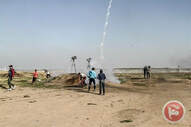
At least 30 Palestinians were shot and injured, while dozens of others suffered from tear-gas inhalation, as Israeli forces suppressed protesters along the eastern borders of the besieged Gaza Strip, on Friday.
The Palestinian Ministry of Health in Gaza confirmed that 30 Palestinians were shot and injured with Israeli live fire, while dozens of others suffered from tear-gas inhalation, including a number of health workers.
The ministry stressed that Israeli forces targeted and opened fire towards medical trauma stabilization points and ambulances, east of al-Breij refugee camp, in central Gaza, and east of Khan Younis, in southern Gaza.
Israeli forces fired live ammunition, rubber-coated steel bullets, and tear-gas bombs during the protest.
Thousands of Palestinians gathered alongside the eastern borders of Gaza to participate in the 51st Great March of Return protests in attempt to break the ongoing Israeli siege.
"The Great March of Return" protests were launched on March 30th by thousands of Palestinian civilians in Gaza -- which has suffered from a decade-long Israeli siege -- who took to the borders to demand their right of return as refugees to their original homelands, now in present-day Israel.
The Palestinian Ministry of Health in Gaza confirmed that 30 Palestinians were shot and injured with Israeli live fire, while dozens of others suffered from tear-gas inhalation, including a number of health workers.
The ministry stressed that Israeli forces targeted and opened fire towards medical trauma stabilization points and ambulances, east of al-Breij refugee camp, in central Gaza, and east of Khan Younis, in southern Gaza.
Israeli forces fired live ammunition, rubber-coated steel bullets, and tear-gas bombs during the protest.
Thousands of Palestinians gathered alongside the eastern borders of Gaza to participate in the 51st Great March of Return protests in attempt to break the ongoing Israeli siege.
"The Great March of Return" protests were launched on March 30th by thousands of Palestinian civilians in Gaza -- which has suffered from a decade-long Israeli siege -- who took to the borders to demand their right of return as refugees to their original homelands, now in present-day Israel.
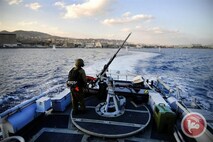
A Palestinian fisherman along with his son were shot and injured by Israeli naval forces, off the northwestern coast of the besieged Gaza Strip, on Friday.
Head of the Palestinian Fishermen Union in Gaza, Zakariya Bakr, told Ma'an that the Israeli navy targeted a number of Palestinian fishing boats and opened heavy fire towards them, injuring one fisherman and his son.
Bakr identified the injured as Muhammad Saad Bakr and his son Mahmoud.
Bakr mentioned that Muhammad and his son were shot and injured with rubber-coated steel bullets.
However, their medical condition remained unknown.
Bakr added that the Israeli navy repeatedly fired live ammunition and rubber-coated steel bullets.
In addition, the fishing boat suffered major material damages as a result of the Israeli navy shooting at the outboard engine.
According to the United Nations Office for Humanitarian Affairs (OCHA), Israel’s blockade of the coastal enclave has seriously undermined the ability for Gazan fishermen to make a living at sea.
The Israeli army regularly detains and opens fire on unarmed Palestinian fishermen, shepherds, and farmers along the border areas if they approach the unilaterally declared buffer zone.
Israeli human rights group B'Tselem recently concluded that Israel's Gaza closure and "harassment of fishermen" have been "destroying Gaza's fishing sector," with 95% of fishermen living below the poverty line.
Head of the Palestinian Fishermen Union in Gaza, Zakariya Bakr, told Ma'an that the Israeli navy targeted a number of Palestinian fishing boats and opened heavy fire towards them, injuring one fisherman and his son.
Bakr identified the injured as Muhammad Saad Bakr and his son Mahmoud.
Bakr mentioned that Muhammad and his son were shot and injured with rubber-coated steel bullets.
However, their medical condition remained unknown.
Bakr added that the Israeli navy repeatedly fired live ammunition and rubber-coated steel bullets.
In addition, the fishing boat suffered major material damages as a result of the Israeli navy shooting at the outboard engine.
According to the United Nations Office for Humanitarian Affairs (OCHA), Israel’s blockade of the coastal enclave has seriously undermined the ability for Gazan fishermen to make a living at sea.
The Israeli army regularly detains and opens fire on unarmed Palestinian fishermen, shepherds, and farmers along the border areas if they approach the unilaterally declared buffer zone.
Israeli human rights group B'Tselem recently concluded that Israel's Gaza closure and "harassment of fishermen" have been "destroying Gaza's fishing sector," with 95% of fishermen living below the poverty line.
|
|
Three American women were violently assaulted by Israeli occupation forces as they attempted to help a disabled woman at Al-Aqsa Mosque on Tuesday, despite showing soldiers their passports.
Virginia nursing student Nour Hawash, who is in Jerusalem on vacation, was taking photos with her mother and sister after midday prayers when Israeli occupation soldiers stormed the compound and started to evacuate the Dome of the Rock. “Suddenly we heard these shots being fired and people just started running all over the place. We saw the IDF [Israeli soldiers], guns pointed, running, trying to chase people. So we just ran with everyone else to the side,” Nour said. |
The number of Israeli troops in the courtyard quickly grew, from a dozen to between 50 to 100 soldiers; Nour also saw several Palestinian men being arrested.
“They were not letting anyone near the Dome of the Rock, they had surrounded it from all its doors,” the 21 year-old student says. “And there was an old lady being wheeled out as she was leaving the prayer area and she fell out of her wheelchair and she was unable to get back in. And I saw that a couple of women were trying to help her, but they were being shoved so I tried to go in as well.”
However, as Nour moved towards the elderly woman, she found herself shoved to the floor by an Israeli soldier, who cuffed one of her wrists and proceeded to sit on her to stop her from moving.
“That’s when like ten to 15 soldiers were holding me down with their feet, trying to get my other wrist in handcuffs. And I had pulled out my passport and I told her [the soldier] that I was an American citizen and she said ‘I don’t care about your ID’ and threw my passport to the side.”
Other soldiers then dragged Nour’s mother, Germeen Abdelkarim, away from her daughter and pushed her against the wall, handcuffing her, as younger sister Safa watched on frantically.
“My sister was going back and forth trying to get to us, but she was being physically pushed down to the ground, and punched and shoved, they pulled her scarf off and tried to choke with it so she couldn’t come near me,” Nour recalls.
After being held down for more than half an hour, an Israeli guard picked up Nour’s American passport from the ground and instructed the other soldiers to release her. Both her and her mother were violently shoved away, and pushed back from the Dome of the Rock close to the compound gates.
However, all the doors had been barred and the family were trapped near the entrance for an hour, neither able to access the mosque nor the rest of the Old City. Even after the gates were opened, the Old City was held under lockdown for a further three hours, before the women could return to their hotel.
Nour has contacted the US embassy in Jerusalem to inform them of the family’s treatment; whilst officials have said they would file a report of the incident, it is unlikely that any further steps will be taken to hold the soldiers responsible for the assault. Other than cuts and bruises, the women suffered no serious injuries.
Tensions have been rising in Jerusalem in recent weeks, after Palestinians re-entered the Al-Rahma Gate area of Al-Aqsa Mosque and performed prayers there for the first time in over 15 years. However, Israeli Prime Minister Benjamin Netanyahu has affirmed that his government intends to close the gate once again, despite condemnation from Palestinian officials.
Last week, Israeli forces entered the Al-Rahma prayer area with their shoes on, in what was seen as a deliberate attempt to provoke Palestinian worshippers.
For Nour, whose mother is originally from Gaza, her experience is reflective of the reality Palestinian worshippers regularly face.
“We’ve always seen these things on TV and on Facebook, you’ve become numb to it. But actually experiencing it and witnessing the reality of the Palestinians is something completely different. It changed my perspective and honestly we are just scratching the surface of what they go through every day,” she concludes.
Under the status quo agreement on Jerusalem, Israeli forces are not permitted to enter Al-Aqsa Mosque, which is under the management of the Jordanian Waqf (religious endowment), or physically attack worshippers.
However, Israeli settlers regularly storm the compound in coordination with Israeli forces, performing rituals and pledging to destroy the mosque, whilst Muslim worshippers are harassed or barred from entering. Extreme settler groups have repeatedly called for increasing raids of the holy site, especially on significant Jewish holidays.
“They were not letting anyone near the Dome of the Rock, they had surrounded it from all its doors,” the 21 year-old student says. “And there was an old lady being wheeled out as she was leaving the prayer area and she fell out of her wheelchair and she was unable to get back in. And I saw that a couple of women were trying to help her, but they were being shoved so I tried to go in as well.”
However, as Nour moved towards the elderly woman, she found herself shoved to the floor by an Israeli soldier, who cuffed one of her wrists and proceeded to sit on her to stop her from moving.
“That’s when like ten to 15 soldiers were holding me down with their feet, trying to get my other wrist in handcuffs. And I had pulled out my passport and I told her [the soldier] that I was an American citizen and she said ‘I don’t care about your ID’ and threw my passport to the side.”
Other soldiers then dragged Nour’s mother, Germeen Abdelkarim, away from her daughter and pushed her against the wall, handcuffing her, as younger sister Safa watched on frantically.
“My sister was going back and forth trying to get to us, but she was being physically pushed down to the ground, and punched and shoved, they pulled her scarf off and tried to choke with it so she couldn’t come near me,” Nour recalls.
After being held down for more than half an hour, an Israeli guard picked up Nour’s American passport from the ground and instructed the other soldiers to release her. Both her and her mother were violently shoved away, and pushed back from the Dome of the Rock close to the compound gates.
However, all the doors had been barred and the family were trapped near the entrance for an hour, neither able to access the mosque nor the rest of the Old City. Even after the gates were opened, the Old City was held under lockdown for a further three hours, before the women could return to their hotel.
Nour has contacted the US embassy in Jerusalem to inform them of the family’s treatment; whilst officials have said they would file a report of the incident, it is unlikely that any further steps will be taken to hold the soldiers responsible for the assault. Other than cuts and bruises, the women suffered no serious injuries.
Tensions have been rising in Jerusalem in recent weeks, after Palestinians re-entered the Al-Rahma Gate area of Al-Aqsa Mosque and performed prayers there for the first time in over 15 years. However, Israeli Prime Minister Benjamin Netanyahu has affirmed that his government intends to close the gate once again, despite condemnation from Palestinian officials.
Last week, Israeli forces entered the Al-Rahma prayer area with their shoes on, in what was seen as a deliberate attempt to provoke Palestinian worshippers.
For Nour, whose mother is originally from Gaza, her experience is reflective of the reality Palestinian worshippers regularly face.
“We’ve always seen these things on TV and on Facebook, you’ve become numb to it. But actually experiencing it and witnessing the reality of the Palestinians is something completely different. It changed my perspective and honestly we are just scratching the surface of what they go through every day,” she concludes.
Under the status quo agreement on Jerusalem, Israeli forces are not permitted to enter Al-Aqsa Mosque, which is under the management of the Jordanian Waqf (religious endowment), or physically attack worshippers.
However, Israeli settlers regularly storm the compound in coordination with Israeli forces, performing rituals and pledging to destroy the mosque, whilst Muslim worshippers are harassed or barred from entering. Extreme settler groups have repeatedly called for increasing raids of the holy site, especially on significant Jewish holidays.
